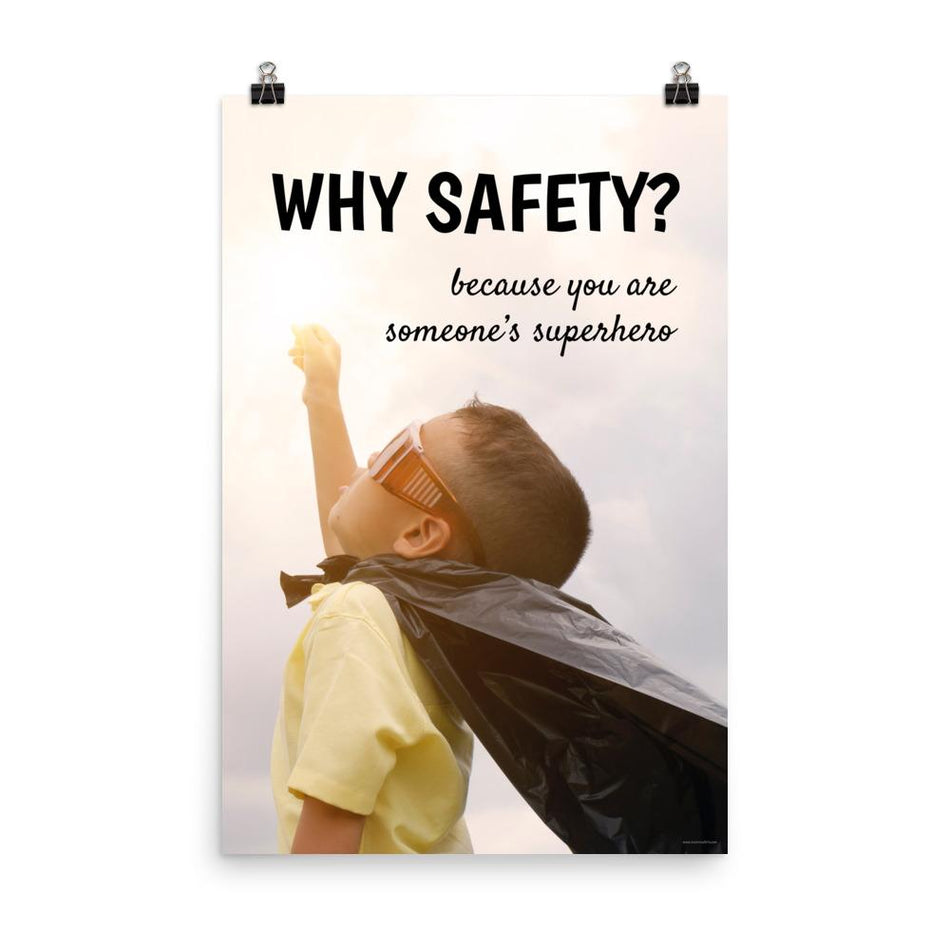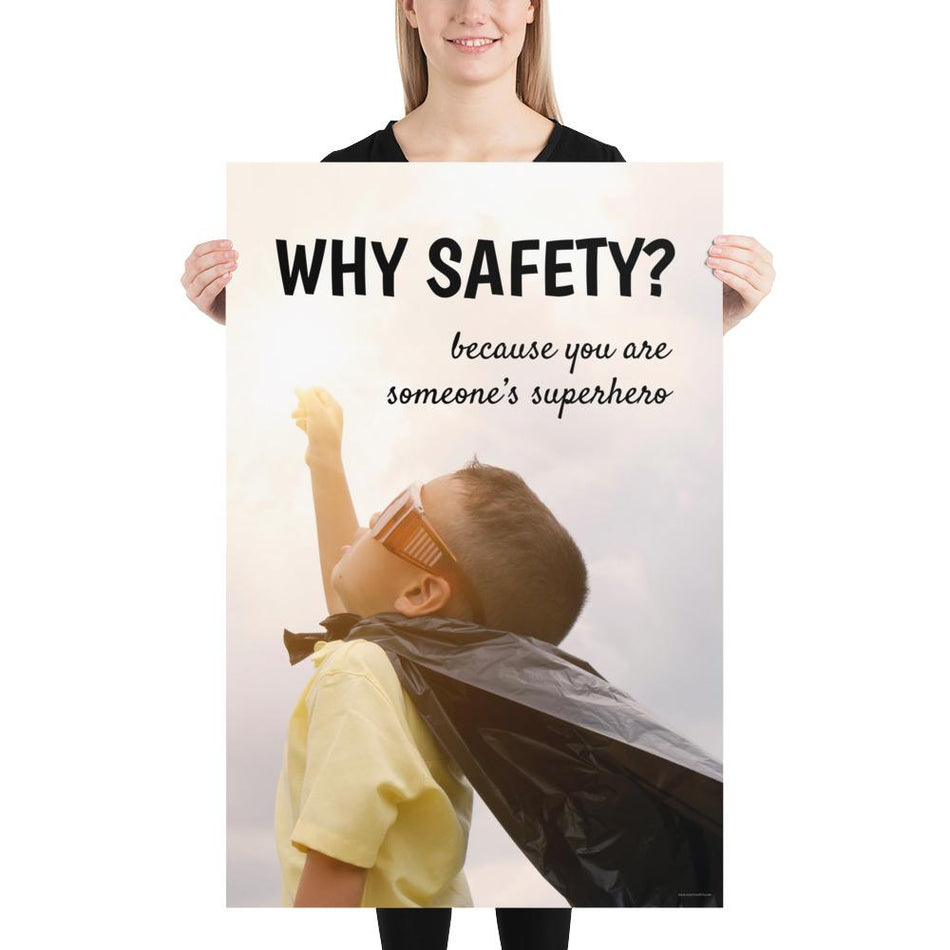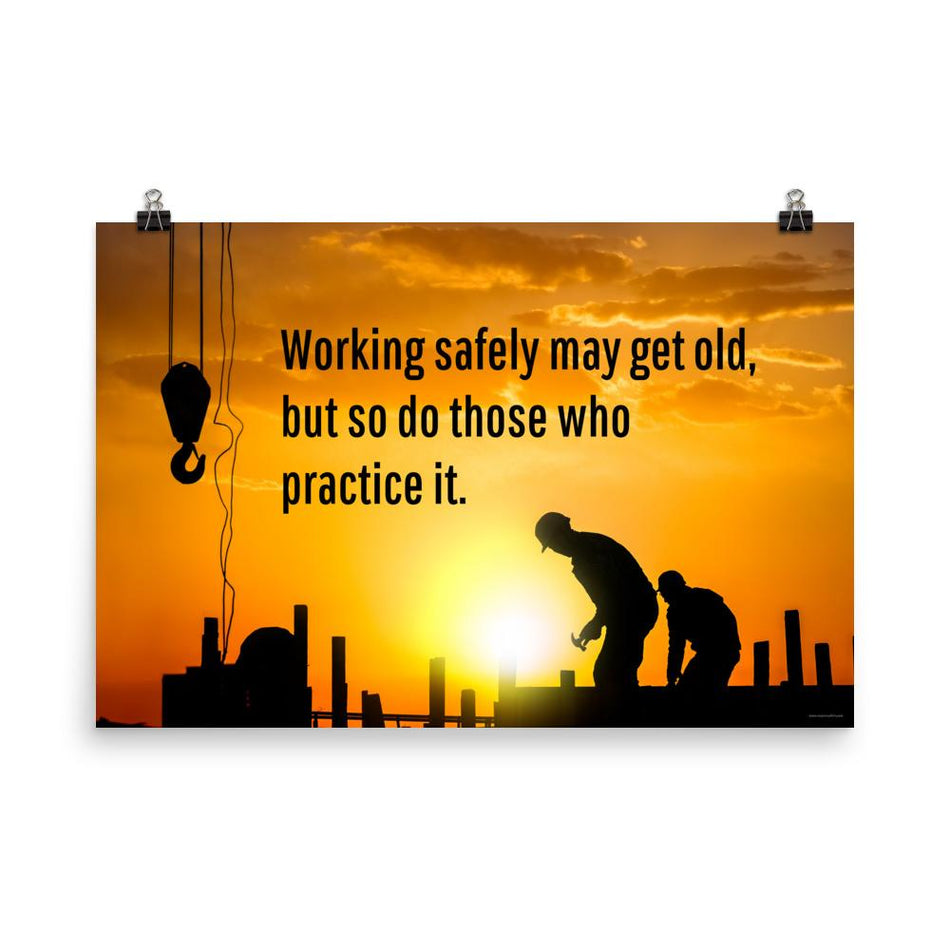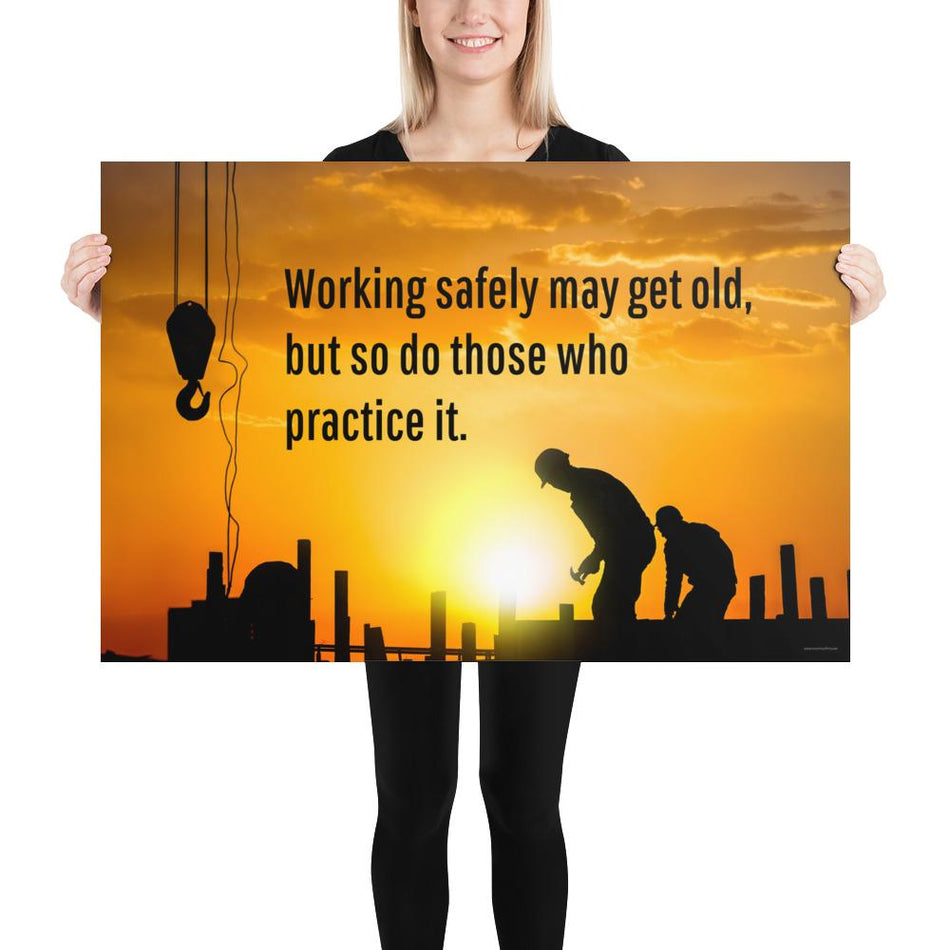Welding is a critical process in various industries, including construction, manufacturing, and automotive repair. It involves the fusion of materials, usually metals or thermoplastics, using high heat. This process, while indispensable, comes with significant risks. Understanding and adhering to welding safety standards is crucial for the health and safety of welders and those around them. An effective way to promote and remind workers of these safety practices is through welding safety posters.
Welding is an essential but hazardous task, making adherence to safety practices non-negotiable.
Welding presents various hazards, such as exposure to intense light and heat, harmful fumes, electric shock, and the risk of fire or explosions. Prolonged exposure to these hazards can lead to serious injuries or health issues. For example, the intense light from welding can cause 'arc eye,' a painful condition where the cornea is inflamed. Fumes produced during welding, depending on the materials involved, can lead to respiratory problems or even long-term illnesses.
Here are some common hazards and health risks that can be associated with welding:
- Burns from Sparks and Hot Metal: One of the most common risks in welding is burns from sparks and hot metal. Welding produces sparks and slag which can easily ignite flammable materials and cause severe skin burns.
- Eye Damage from Arc Rays: The intense light produced by welding, known as arc flash, can cause severe damage to the eyes, including 'welder's flash' or arc eye, a painful condition where the cornea is inflamed.
- Fume Inhalation: Welding fumes contain a variety of metals and gases that can be harmful if inhaled. Prolonged exposure can lead to serious respiratory issues, including lung cancer and metal fume fever.
- Electric Shock: Electric shock is another significant risk, particularly in environments where welding equipment is not properly maintained or where safety practices are not followed.
- Noise Exposure: Welding equipment can produce high noise levels, leading to hearing loss over time if proper hearing protection is not used.
- Fire and Explosion Risks: The combination of sparks, heat, and flammable materials can easily lead to fires or explosions in the workplace.
Welding safety posters play a crucial role in mitigating these risks. They act as continuous reminders of the necessary safety practices and precautions. These posters can efficiently convey critical information through visuals and concise text, making them an effective tool for reinforcing safety protocols.
Welding is an essential but hazardous task, making adherence to safety practices non-negotiable. Welding safety posters serve as an effective tool for reminding workers of these practices and promoting a safety-first culture. Their role in reinforcing safety cannot be overstated. By incorporating welding safety posters in workplaces, organizations can significantly contribute to the prevention of accidents and health issues, ensuring a safer work environment for everyone involved.
Implementing and maintaining safety measures are a crucial part of welding safety:
- Personal Protective Equipment (PPE): Wearing the right PPE is vital. This includes a welding helmet with a proper shade to protect the eyes and face, fire-resistant gloves, long-sleeve jackets to protect against sparks and heat, and ear protection. Welding boots and helmets with respirators are also recommended.
- Proper Ventilation: Adequate ventilation is crucial to disperse harmful fumes and gases produced during welding. Depending on the environment, this might mean working under a fume extraction hood or using portable exhaust systems.
- Regular Equipment Inspection and Maintenance: All welding equipment should be regularly inspected and maintained to prevent accidents caused by equipment failure.
- Safe Work Environment: The work area should be kept clean and free from flammable materials. Adequate fire extinguishing equipment should be easily accessible.
- Training and Awareness: Welders should receive proper training not only in welding techniques but also in safety practices. Regular safety meetings and updates on new safety equipment and practices can also be beneficial.
- Use of Guards and Screens: To protect other workers from sparks, heat, and light, use welding guards or screens around the welding area.
- First Aid and Emergency Preparedness: Knowing basic first aid and having a plan for emergencies like fires or electric shocks is essential.
Welding safety posters are a crucial aspect of maintaining safety in welding operations. Their presence not only informs but also demonstrates a commitment to the wellbeing of the workforce, a cornerstone for any successful and responsible organization.
Welding safety is about creating a culture of awareness and responsibility. It is imperative for individual welders and employers to prioritize safety through education, proper equipment, and adherence to safety standards. By understanding the risks and implementing the necessary precautions, welders can protect themselves, their colleagues, and their workplace from the inherent dangers of the trade. This commitment to safety not only ensures personal well-being but also contributes to the overall success and professionalism of the welding industry.










